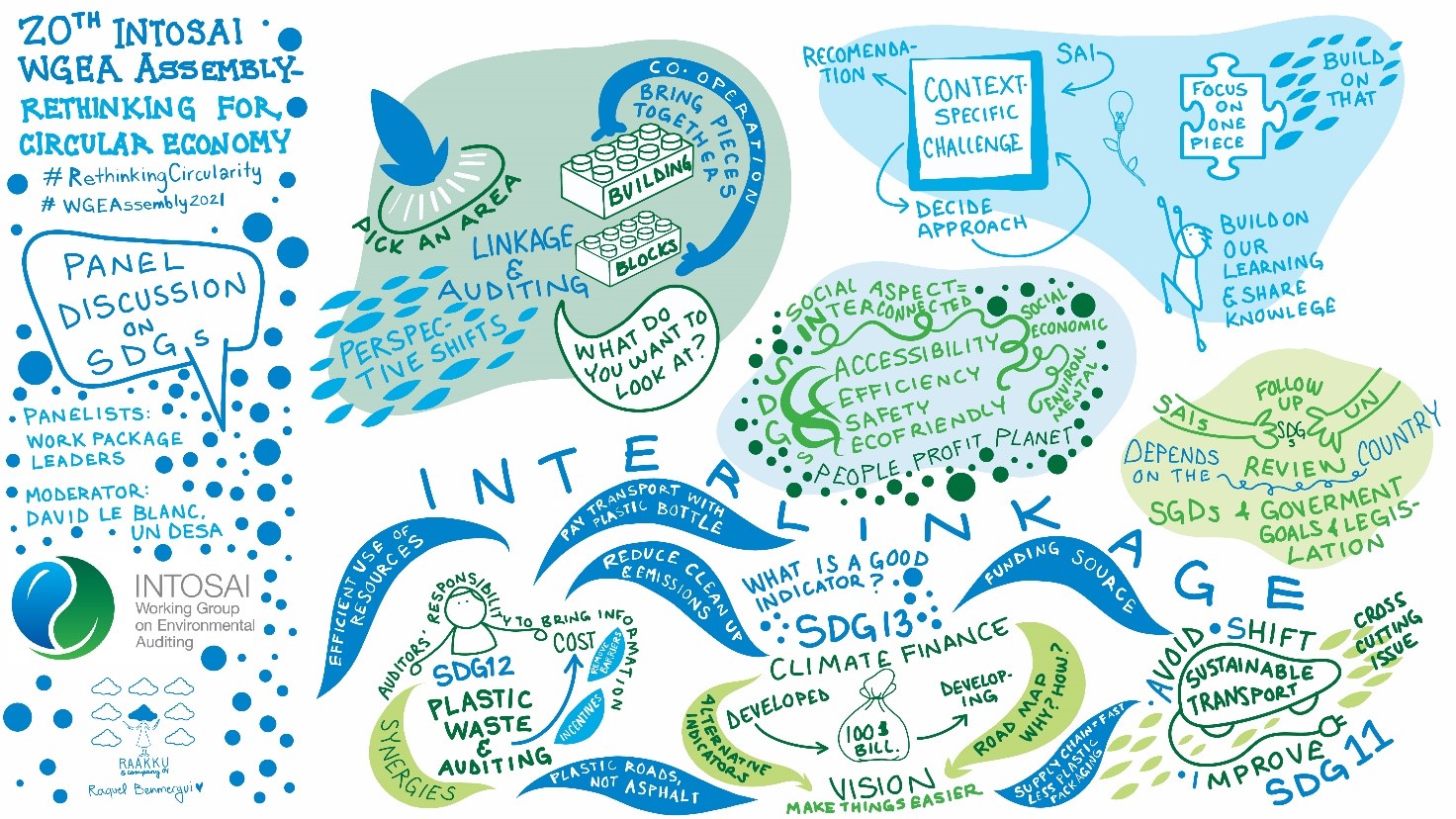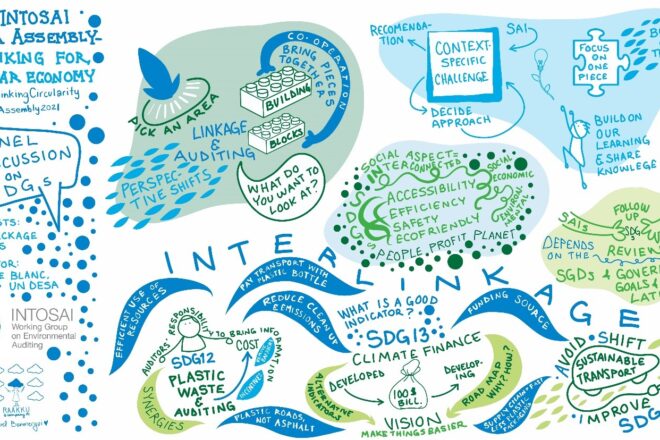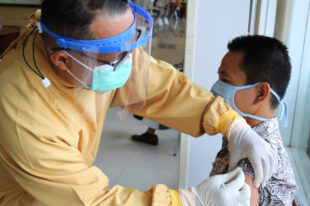by Vivi Niemenmaa, Secretary General of INTOSAI WGEA
INTOSAI WGEA Holds a Virtual Assembly, with a Focus on Circular Economy
With the pandemic ongoing, the INTOSAI Working Group on Environmental Auditing (WGEA) held its 20th Assembly in January 2021 as a virtual event. The assembly’s main theme was “circular economy,” which encourages more sustainable consumption and production, and the more efficient use of resources. “We believe that the concept of circular economy will help us rethink in an innovative way how we organize our societies and economies,” Secretary General Vivi Niemenmaa noted from the meeting’s studio in Helsinki.

A summary of keynote presentations and panel discussions on this topic is available here.
Despite some technical mishaps and time zone challenges, feedback from the 300 registered participants from around 70 countries was positive. The hybrid panels combining input from speakers in the studio and experts from other countries over video worked well. The event proved that in the future, INTOSAI WGEA could potentially hold some of its bigger meetings in a virtual format. INTOSAI WGEA outsourced the technical expertise necessary for this meeting, and it recommends that other organizations that do not have this support in-house do so as well for their virtual events.
From an environmental perspective, organizing a large event in a virtual format has the clear benefit of avoiding the greenhouse gas emissions caused by travel. This format also allows more participants to join, since there is no need for Supreme Audit Institutions (SAIs) to cover travel costs. One challenge was how to engage participants in the virtual meeting. INTOSAI WGEA decided to test an app that enabled participants to send in questions to the panelists, as well as create word clouds and answer different polls.
Among the downsides of the virtual format were reduced personal interaction and the fact that participants from some regions had to sacrifice sleep to join the event in real time. Despite all our digital tools and gadgets, our beautiful planet is still a round one!
INTOSAI WGEA Selects Winners for First Award for Best Visualization
One of the highlights of the virtual assembly was the launch of a new INTOSAI WGEA Award—Inspiration in Environmental Auditing—to be handed out at the assembly every second year. The award’s theme will be different each time and reflect the latest developments in environmental auditing.
INTOSAI WGEA chose the award’s first theme—visualization—to encourage SAIs around the world to communicate their audit results in a clear and engaging manner.
INTOSAI WGEA’s selection of this theme was informed by the research it conducted in 2019 on the visibility of environmental auditing. The research project identified several key trends: that SAIs are communicating audit results through social media, increasingly considering all staff members as communications resources, and using infographics, visualizations, and illustrations to clearly disseminate messages.
INTOSAI WGEA received award submissions from 12 SAIs around the world. The Award Jury members—from the European Court of Auditors and SAIs of New Zealand, Russia, and the United States—judged submissions based on richness of content, visual appeal, sophistication of execution, and clarity.
The chair of the Award Jury, Director Peter Welch from the European Court of Auditors, complimented all of the submissions and declared a joint award for the SAIs of Slovenia and Indonesia, both of which visualized audits on water quality.
Slovenia produced a brochure with a clear and informative map (see figure 1), and Indonesia created a poster that presents an abundance of information in a visually appealing format (see figure 2).
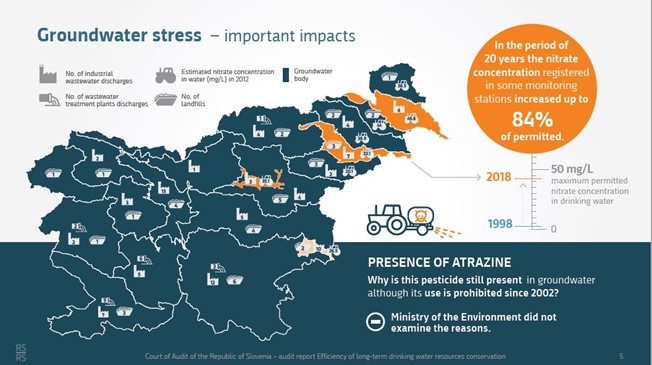
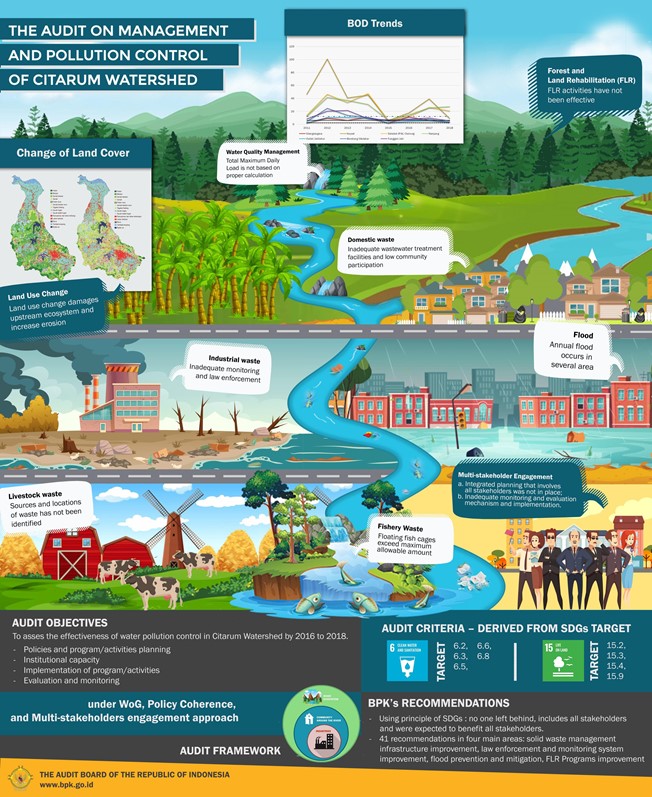
INTOSAI WGEA “Visualizes” Sessions
In the spirit of practicing what it preaches, INTOSAI WGEA applied visualizations to several assembly sessions, including a panel discussion featuring speakers from the SAIs of India, Indonesia, and the United States. WGEA’s visual storyteller created an illustration of the discussion exploring interlinkages among the SDGs and plastic waste, sustainable transport, and climate finance (see figure 3).
